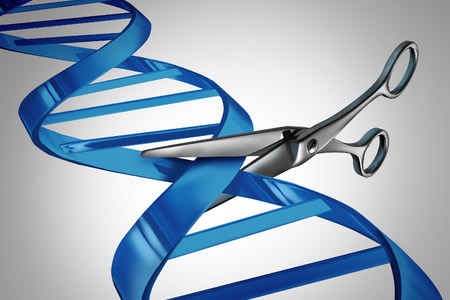Researchers in the United States and EU were the first to discover and develop the CRISPR-Cas9 gene editing tool, but China has surged ahead with trials using CRISPR gene editing on humans. In the EU and US, CRISPR gene editing on humans is still pending approval. Meanwhile, in China, more than 86 patients have received CRISPR treatment, including patients with HIV, liver cancer, lung cancer, stomach cancer, throat cancer, and B-cell leukemia, according to a recent WSJ report.
The first trial in the US using the CRISPR gene editing tool on humans is believed to be close, although approval still hasn’t been granted over concern over safety of the treatment.
CRISPR (Clustered Regularly Interspaced Short Palindromic Repeats) was jointly discovered by biologists Jennifer Doudna and Emmanuelle Charpentier in 2012.
CRISPR is part if the defense system of bacteria, which has been harnessed and used as a gene editing tool.
Bacteria use the system to identify changes to their DNA caused by viruses, and make very specific cuts to remove the offending material. The system has been modified for use as a gene editing tool using RNA-guided Cas proteins to ensure cuts only occur in the desired place. Genes can be snipped out, or new genes added. CRISPR-Cas9 therefore could be used to treat a wide range of genetic diseases.
While CRISPR has been shown to allow very precise cuts to be made to DNA, there are still questions about the unintended effects of the treatment such as off-target gene edits.
The regulatory processes in the EU and US, which were put in place to ensure medical treatments are safe before use, have hampered the use of CRISPR gene editing on humans, even though animal trials have produced positive results.
When it comes to using CRISPR gene editing on humans in China, there are few restrictions in place. There are no federal regulators wrapping CRISPR in red tape. All that is required for the therapy to be used, is for approval to be given by the hospital. In China, Dr. Wu Shixiu has been permitted by the Hangzhou Cancer Hospital to use the treatment on patients that have agreed to being treated using the novel therapy.
While the EU and US should be leading the way in the use of CRISPR gene editing on humans, the lack of regulations has meant China has taken the lead. However, the delay is no bad thing. While many procedures have been performed on patients in China, the effectiveness of the treatment is unclear.
While there have certainly been some major successes, not all patients have benefitted. Further, some trials using CRISPR-Cas9 on human embryos produced far from convincing results. One 2016 study using 86 embryos, saw genetic mutations caused in two thirds of the embryos and only 28 survived. Relatively few of those embryos were found to have the intended gene edit.
Some studies in the US have produced excellent results, others have not. The cautious approach to the new treatment is therefore unsurprising.
